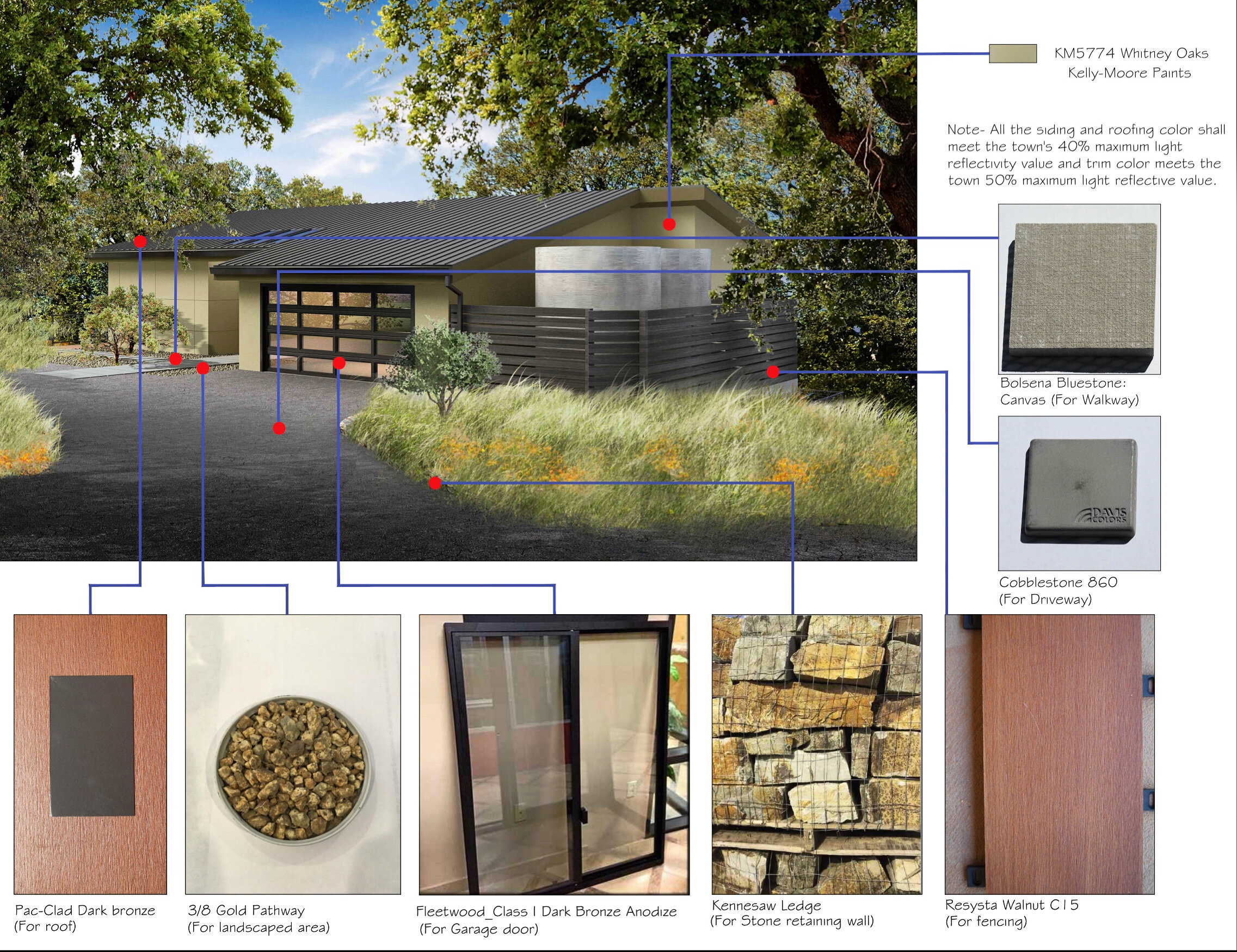What Does Light Reflective Value Mean?
This is the same home from an earlier post when we talked about visual storytelling - the opposing view showing the front of the home and how it seamlessly integrates into the surrounding hillside and foliage. The roof and siding colors were chosen to ensure they are within the town’s required LVR - the light reflective value.
What is LRV Anyway?
LRV, or Light Reflective Value, refers to how light or dark a paint colour will look on a scale of 0 (black) to 100 (white). The higher the LRV number is, the lighter the colour is. The lower the LRV number is – the darker the colour is. Many towns have LRV requirements when building or remodeling a home. It’s important to ask your architect, designer and/or contractor about these requirements prior to committing to an exterior color for your home. Woodside, as one example has clear guidelines on LRV and color choices:
1. Select colors and materials which fit with the natural environment, thesite, and the neighborhood. Materials which retain the appearance of their natural finish are preferred. Lighter colors should be used in settings where they are appropriate, such as meadows as opposed to redwood forest.
2. The use of lighter colors may be appropriate for structures that relate to the historic vernacular of Woodside.
3. Color and material choices should be consistent with the building’s architectural style, building location, and mass. Muted colors that complement the surrounding natural landscape are preferred. Excessive variation in color is discouraged.
4. Roof colors should be inconspicuous when viewed from a distance. Select roof colors and materials that limit glare.
Blending in with the surrounding area creates a sense of symmetry, is visually soothing and ensures neighboring homes complement one another.

